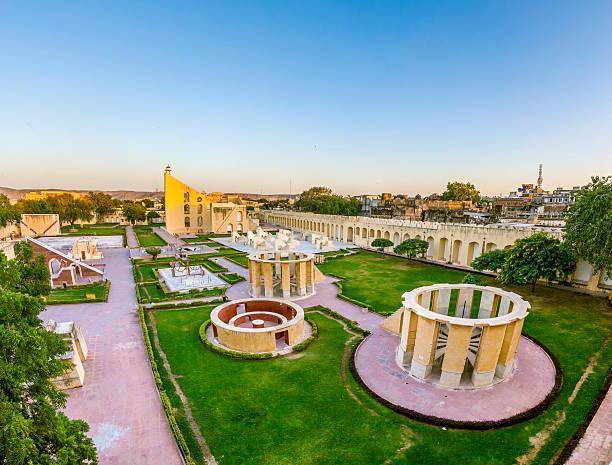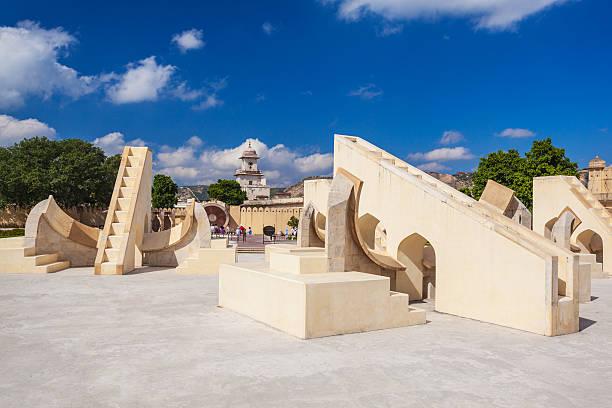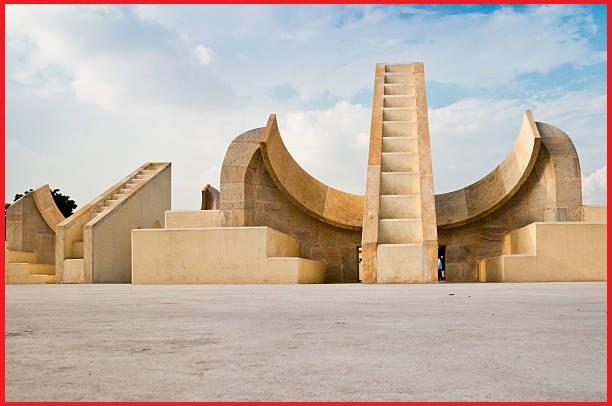Jantar Mantar- A extraordinary Place and UNESCO World Heritage site
Jantar Mantar Jaipur
Jantar Mantar in Jaipur is an astronomical observatory that was built by Maharaja Jai Singh II in the early 18th century. The Jantar Mantar in Jaipur is the largest and most well-known of the 5 observatories that are located in New Delhi, Ujjain, Varanasi, and Mathura. Jantar Mantar in Jaipur consists of a collection of 19 architectural astronomy instruments used to measure the positions of celestial objects.
Some of the notable instruments at Jantar Mantar in Jaipur include the Samrat Yantra, which is a massive sundial that can be used to measure local time to an accuracy of about 2 seconds, and the Jai Prakash Yantra, which is a pair of concave hemispherical structures that can be used to determine the altitude and azimuth of celestial objects. Jantar Mantar in Jaipur is also a UNESCO World Heritage Site and is considered one of the largest and most well-preserved astronomical observatories in the world. It is a popular tourist attraction and is often visited by both domestic and international tourists who are interested in astronomy and Indian history.

Samrat Yantra
The Samrat Yantra is a giant sundial located at the Jantar Mantar observatories in India, including those in Jaipur and Delhi. It is one of the largest sundials in the world and was used to measure time with great accuracy. It consists of a massive triangular gnomon (the part that casts a shadow) that is tilted at an angle equal to the latitude of the location. The gnomon stands at a height of about 27 meters and is aligned with the North-South axis.
The shadow of the gnomon falls on a series of curved, triangular walls that form a semi-circle on the ground. These walls are divided into segments that represent different time intervals, ranging from minutes to hours, depending on the size and position of the segments. By measuring the length and position of the shadow cast by the gnomon, the time of day can be determined with an accuracy of about 20 seconds.
Also, read- Hawamahal in Jaipur- A unique architecture made of Pink Sandstone
Jai Prakash Yantra
The Jai Prakash Yantra is part of the Jantar Mantar observatories. It was designed by Maharaja Jai Singh II to measure the altitude and azimuth of celestial objects. The Jai Prakash Yantra consists of two concave hemispherical structures that are mounted on a platform. The structures are made of stone and are arranged in such a way that the observer can sit in the center and observe the sky through a small hole on the top of each structure.

The inner surface of each hemisphere is marked with a series of lines and circles that help the observer measure the altitude and azimuth of a celestial object. By aligning the markings on the hemisphere with the observed object, the altitude, and azimuth can be read off a scale. The Jai Prakash Yantra was used to measure the position of stars and planets with great accuracy and was an important instrument for astronomers and astrologers in ancient India. Today, the Jai Prakash Yantra is still admired for its precise engineering and impressive accuracy of its measurements.
Jantar mantar in india
There are actually five Jantar Mantar observatories in India, all of which were built by Maharaja Jai Singh II. They are located in Jaipur, Delhi, Ujjain, Varanasi, and Mathura. Each Jantar Mantar observatory consists of a collection of architectural astronomy instruments that were used to observe and measure the positions and movements of celestial objects such as the sun, moon, planets, and stars.
The Jantar Mantar in Jaipur, Rajasthan is the largest and most well-known of the five observatories. It contains 19 instruments and is a UNESCO World Heritage Site. The one in Delhi, which has 13 instruments, is also a popular tourist attraction. The observatories in Ujjain, Madhya Pradesh, and Varanasi, Uttar Pradesh, each have 13 instruments and are lesser known than the ones in Jaipur and Delhi. The Jantar Mantar in Mathura, Uttar Pradesh, has only four instruments and is the smallest of the five. All of the Jantar Mantar observatories are important historical and scientific landmarks in India and offer a fascinating glimpse into the astronomical knowledge and technological capabilities of the past.

Jantar Mantar New Delhi
Jantar Mantar at New Delhi consists of a collection of 13 architectural astronomy instruments. The instruments at Jantar Mantar include the Samrat Yantra and the Jai Prakash Yantra, which consist of two concave hemispherical structures used to measure the altitude and azimuth of celestial objects. The place is considered an important historical and scientific landmark in India and is a popular tourist attraction. It is also a UNESCO World Heritage Site and is protected by the Archaeological Survey of India.
Jantar Mantar Ujjain
Jantar Mantar in Ujjain is one of the five astronomical observatories in India. It consists of a collection of 13 architectural astronomy instruments used to measure the positions and movements of celestial objects. The Jantar Mantar in Ujjain is smaller than the ones in Jaipur and Delhi but is still an impressive feat of engineering and astronomy. Some of the notable instruments at Ujjain include the Samrat Yantra, and Chakra Yantra, which is a circular instrument used to measure the position of the sun.

Jantar Mantar Banaras
The observatory in Banaras no longer exists. It is believed to have been destroyed during the early 19th century. However, it included 13 astronomical instruments for measuring the positions and movements of celestial objects, including the sun, moon, planets, and stars. Despite the loss of the observatory in Banaras, the city remains an important center for astronomy and astrology in India. The city has a rich history of astronomical observations and is home to many ancient observatories, temples, and pilgrimage sites that are associated with the study of astronomy and astrology.
Jantar Mantar Mathura
The Jantar Mantar in Mathura consists of only four astronomical instruments used to measure the positions and movements of celestial objects. The Jantar Mantar in Mathura is the smallest of the five observatories but is still an important historical and scientific landmark in India. Some of the notable instruments at Mathura include the Ram Yantra, which is a set of two cylindrical structures that can be used to measure the altitude and azimuth of celestial objects, and the Kranti Yantra, which is a circular instrument used to measure the position of the sun.



